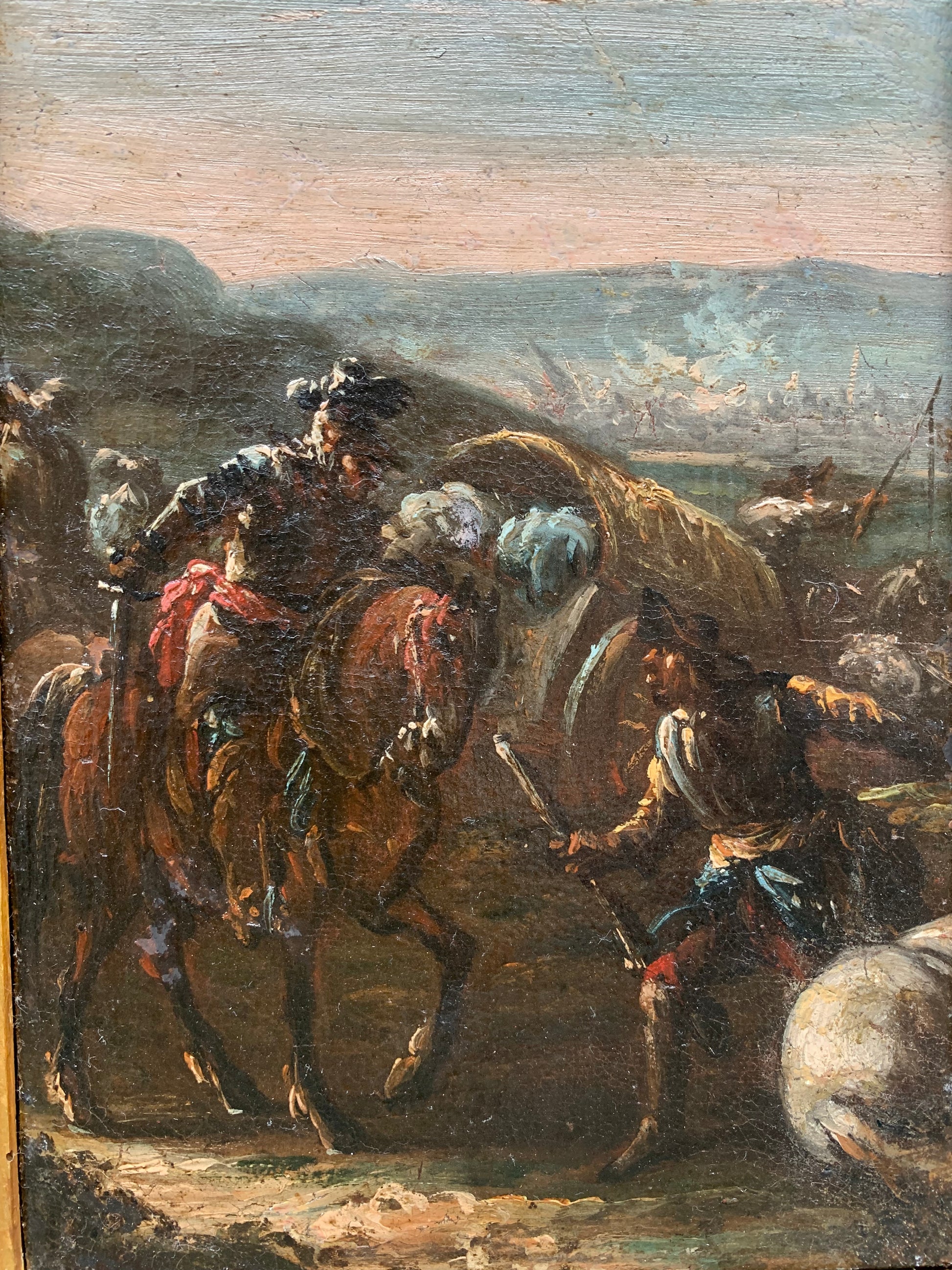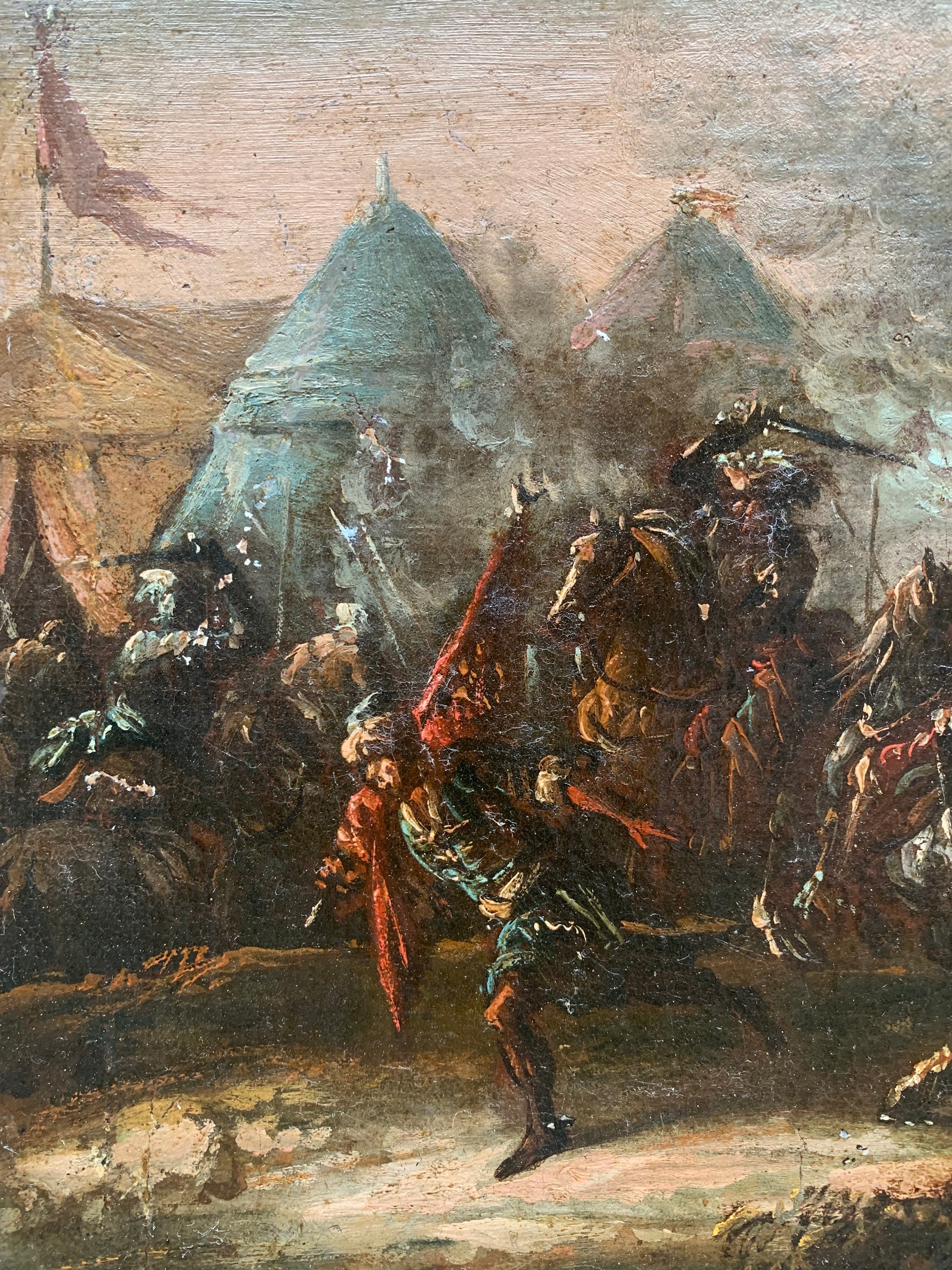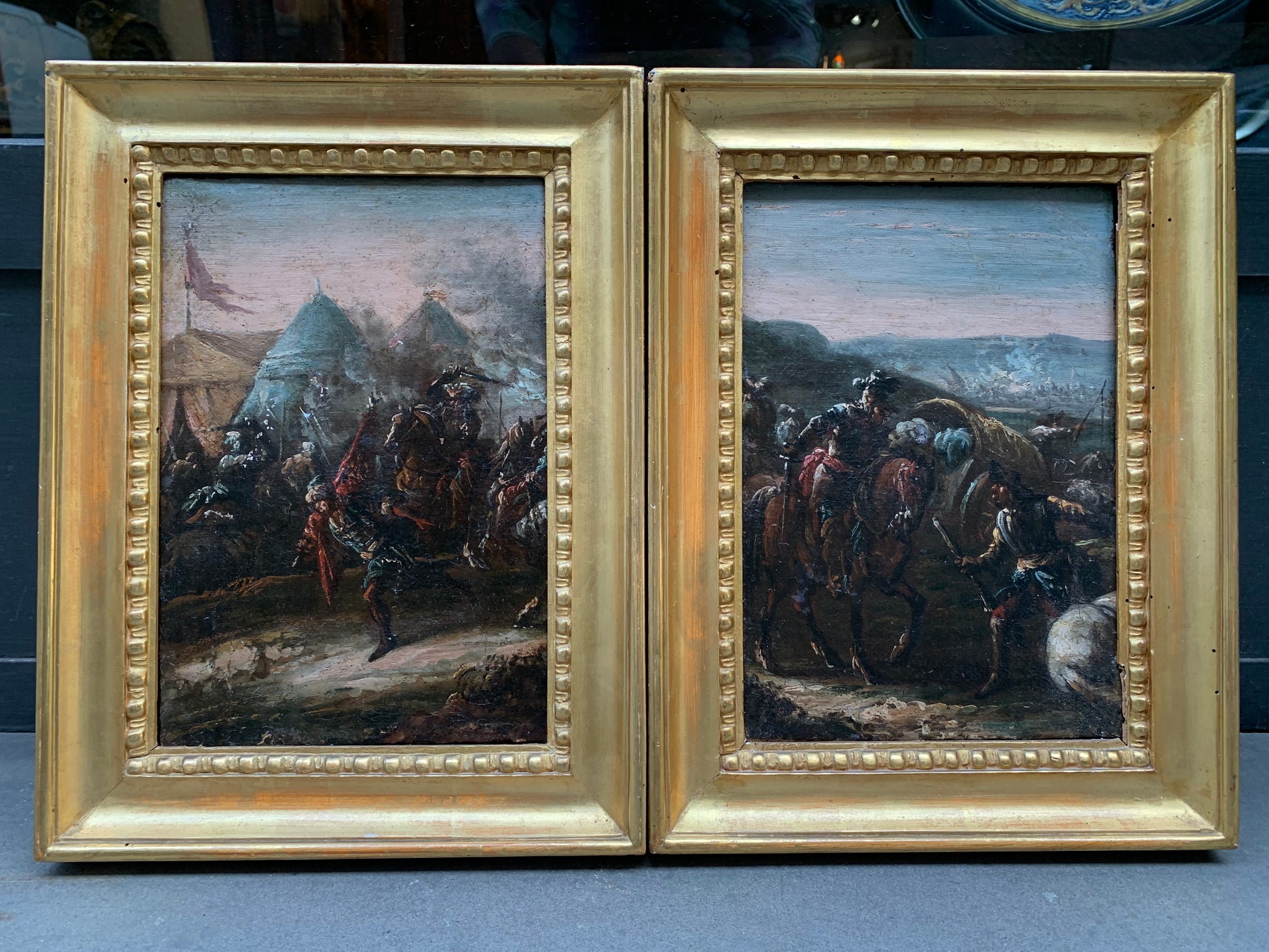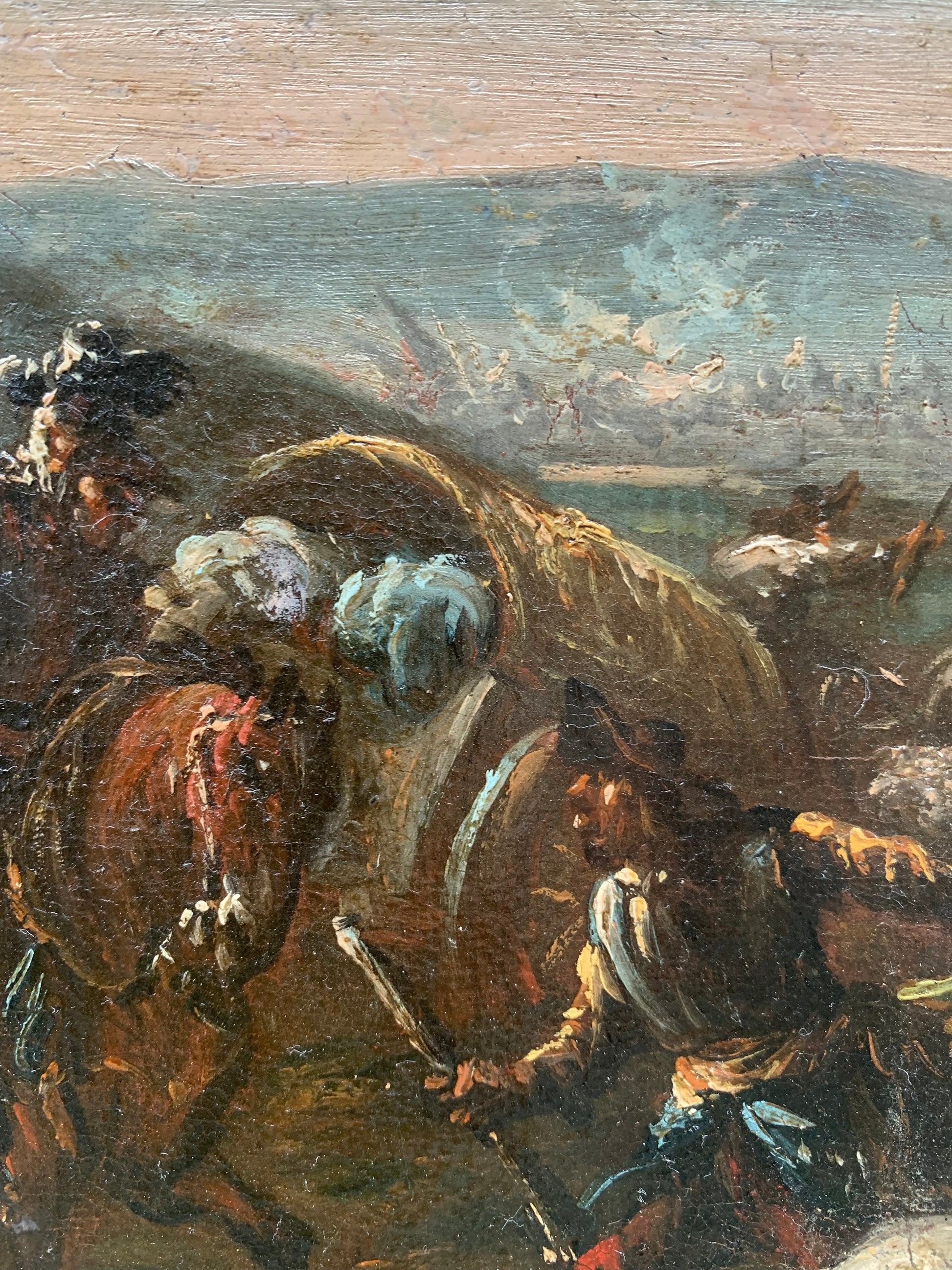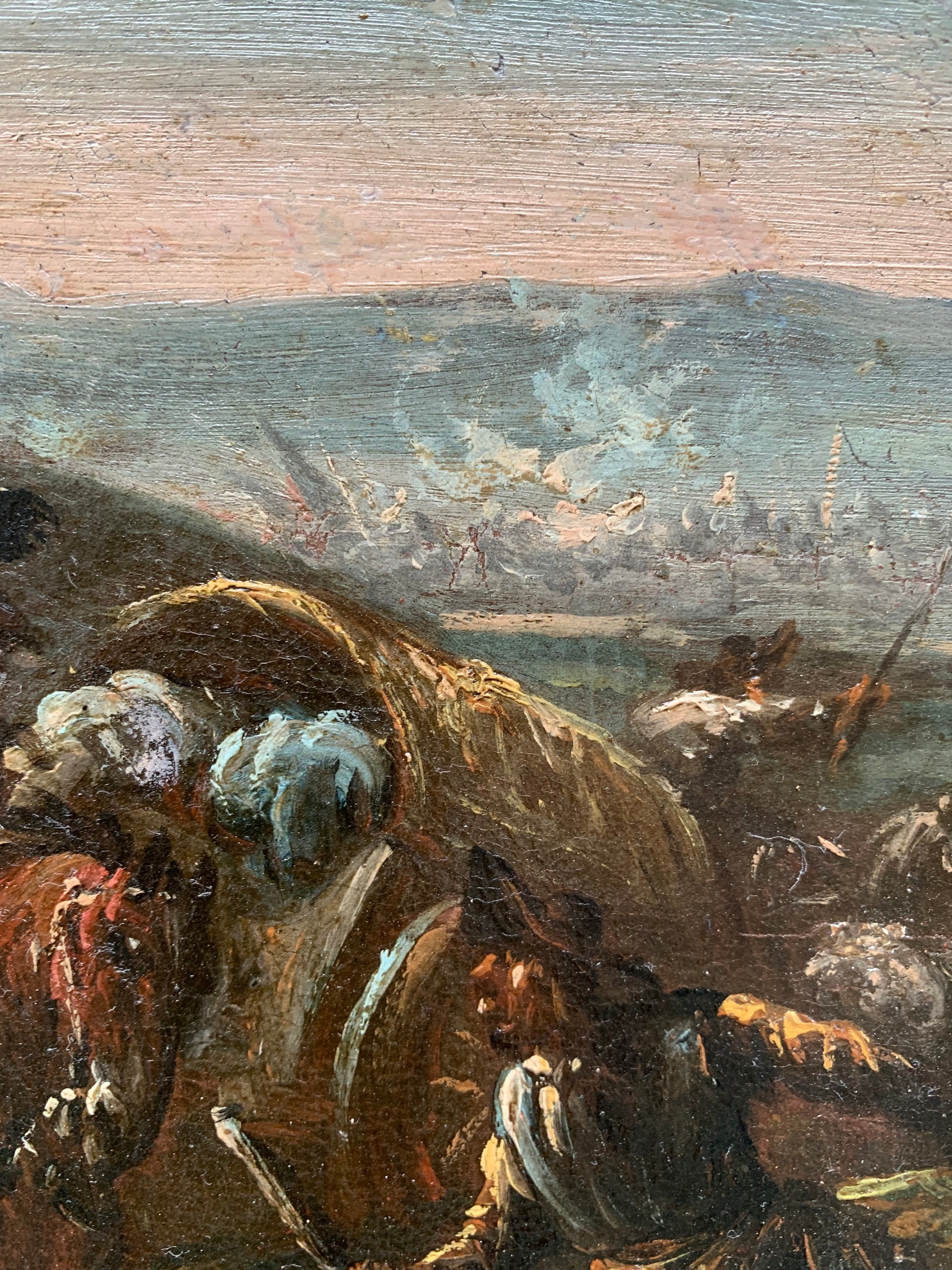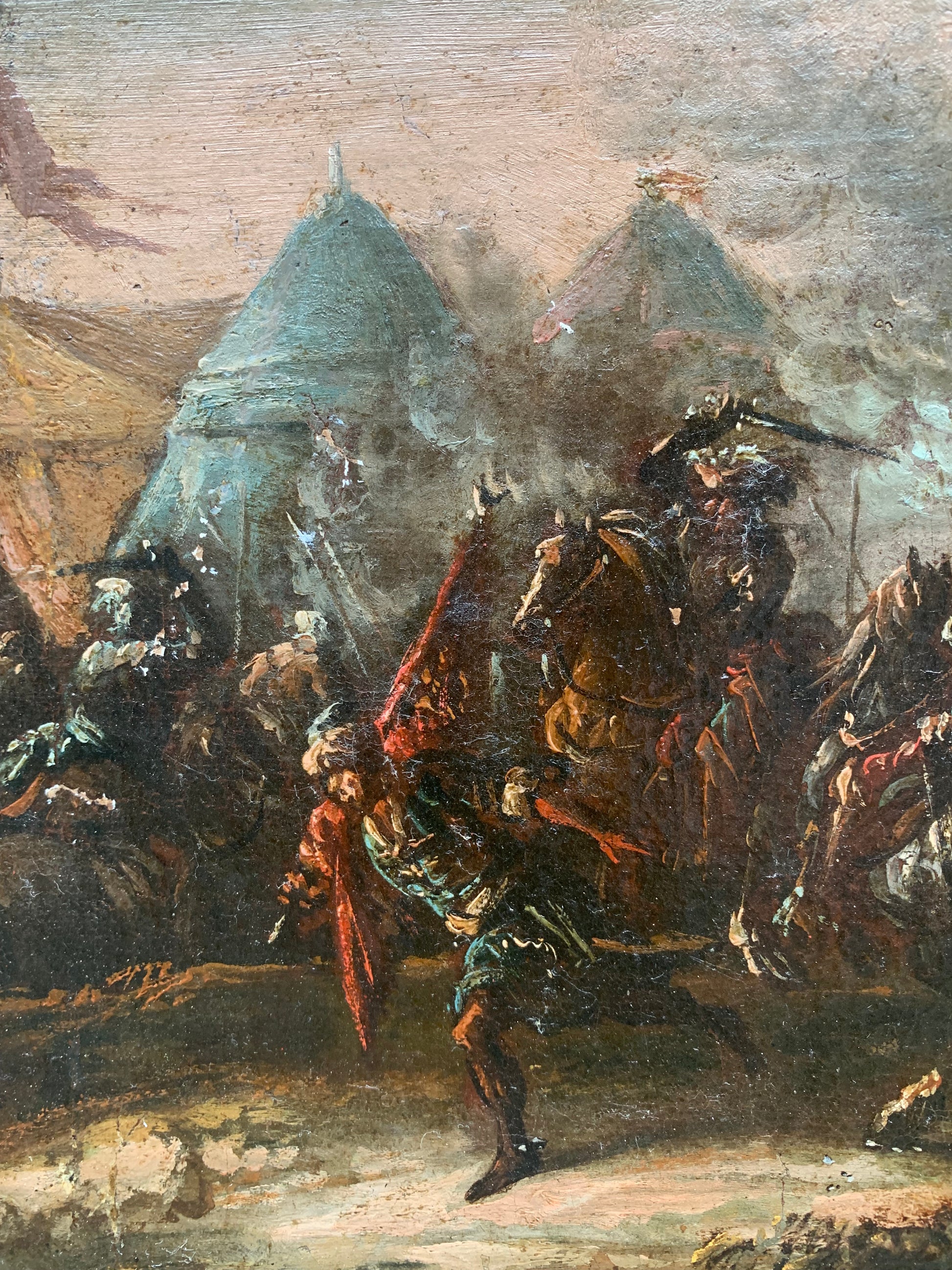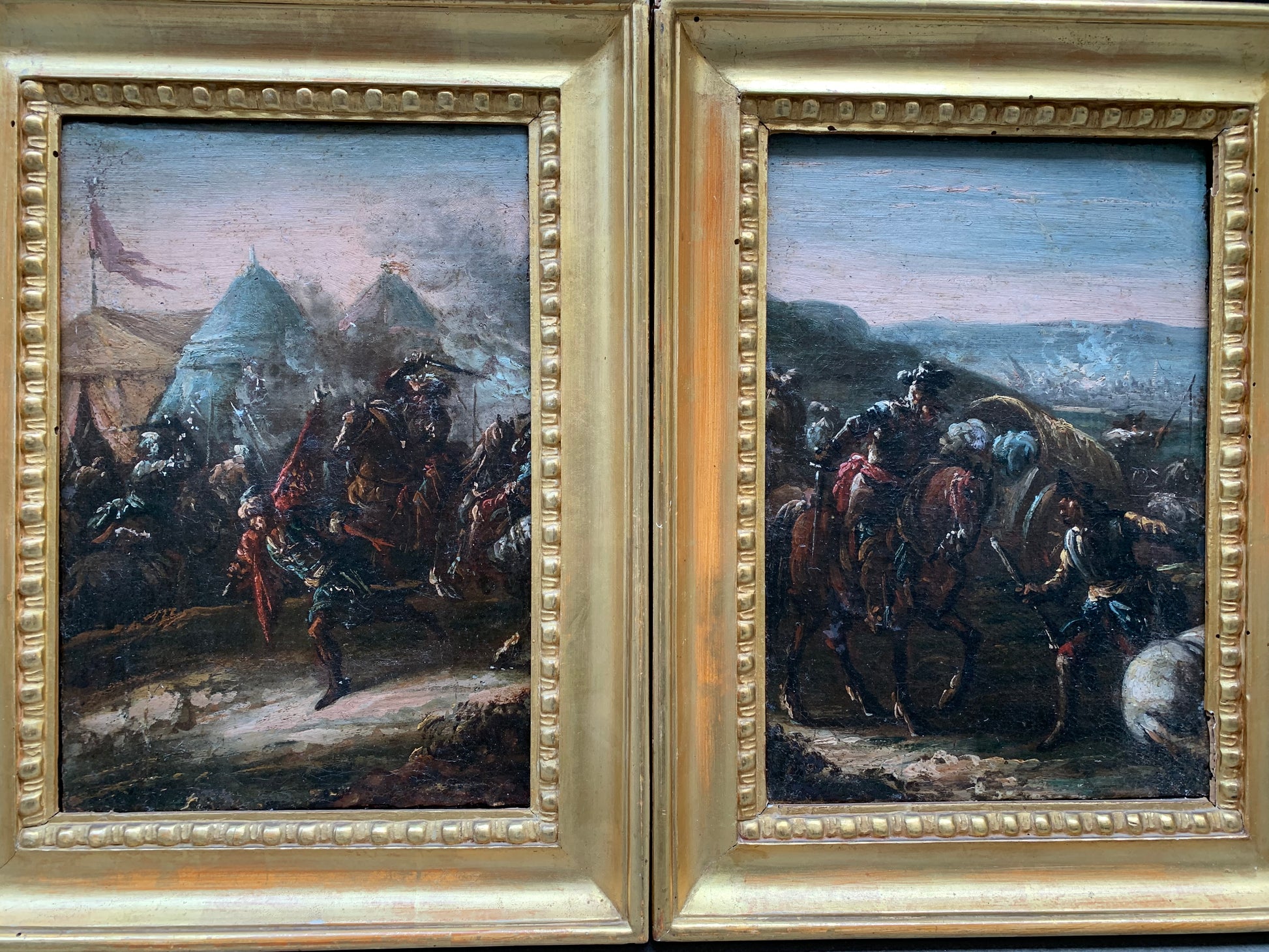@alina.malova
Scena di accampamento militare e battaglia. Pietro Graziani (XVII/XVIII secolo), seguito.
Scena di accampamento militare e battaglia. Pietro Graziani (XVII/XVIII secolo), seguito.
Impossibile caricare la disponibilità di ritiro
2 dipinti: Scena di accampamento militare e Battaglia.
Pietro Graziani (XVII/XVIII secolo), seguito.
Una coppia (due) di piccoli dipinti.
Cornici antiche del XIX secolo in legno dorato.
In buone condizioni.
Olio su tela.
Tela foderata
Dimensioni con cornice ciascuna H 34cm x L 26cm
Dimensioni senza cornice ciascuna H 26cm x L 17 cm
Entrambi i dipinti hanno le stesse dimensioni e sono stati realizzati dallo stesso artista.
In uno dei dipinti vediamo un messaggero che indica con la mano un cavaliere, indicando alcuni movimenti che ha appena visto, o portando notizie di perdite. La scena trasmette un senso di velocità di ciò che sta accadendo; in lontananza, possiamo vedere nuvole di fumo, i profili di stendardi sullo sfondo di distanze azzurre, una città in lontananza, un paesaggio collinare. Il cavaliere indossa un'armatura, il suo elmo è piumato, così come l'uniforme del cavallo. Sullo sfondo, possiamo vedere un carro rovesciato di recente, tracce di battaglie violente e brutali.
Nella seconda opera, la scena si svolge in un accampamento militare , con tende , dove avviene la fuga e l'inseguimento di un uomo con turbante e abiti colorati di foggia orientale, forse un turco che cerca di rubare gli stendardi. Dietro di lui, un guerriero a cavallo ha già alzato la spada per fermare il fuggitivo.
In entrambe le composizioni si percepisce un senso di velocità, il tempo, la velocità, percepiti in modo molto netto. L'intensità e la velocità fulminea di ciò che accade sono magistralmente incarnate nella tecnica pittorica: davanti a noi c'è quasi uno schizzo tecnico, ogni pennellata è un concentrato di emozione e movimento. Queste tecniche pittoriche sono molto audaci e prefigurano la pittura di un periodo successivo. Ma certamente attingono alla tradizione della pittura napoletana, in particolare a Salvator Rosa, artista straordinario, nonché poeta e filosofo.
FRANCESCO E PIETRO GRAZIANI
Tra la fine del XVII e l'inizio del XVIII secolo furono attivi a Napoli e a Roma due pittori.
Con l'appellativo di "Ciccio Graziani", o più semplicemente "Ciccio Napoletano", sono state catalogate, fin dal Settecento negli inventari di celebri collezioni private, poi in parte divenute pubbliche, alcune battaglie di piccolo formato, caratterizzate da un'inconfondibile impronta stilistica ed esecutiva. Ne sono esempi conservati nei musei fiorentini, la coppia della Galleria Pallavicini di Roma, molti altri nei noti musei, italiani, dalla Capitolina e dal Corsini di Roma, dal Bardini di Firenze, dal Civico di Deruta, alle pinacoteche di Napoli e Prato, oltre a molti stranieri (Ginevra, Grenoble, Nantes, Schleissheim, ecc.), fino alla Waltes Art Gallery di Baltimora.
Graziani, citati nelle fonti antiche con la specifica qualifica di "Battaglista", sono chiaramente due: una di queste fonti è brevemente riportata da Pietro, il quale afferma di non sapere se fosse coniuge o figlio di Ciccio Graziano che lasciò opere nelle chiese di Roma. Questo infatti è ricordato anche da E. Titi, come famoso per le battaglie.
Pur dovendo dunque riconoscere con sicurezza l'attività dei due battaglist Graziani, solo omonimi o più probabilmente stretti parenti, entrambi napoletani, se non figli almeno di scuola, resta l'incontrovertibile constatazione che la maggior parte dei dipinti, oggi riuniti sotto il nome di Ciccio Graziani (o, napoletano), denunciano una matrice tardo-cinquecentesca, già incline a soluzioni settecentesche, avvalendosi dell'inventiva napoletana, dal Falcone al Rosa, decisamente rafforzata dalla conoscenza diretta del Borgognone.
Rappresentazioni su sfondi paesaggistici nitidi con scene cavalleresche movimentate e affollate, i cui personaggi, delineati con un tratto rapido e nervoso, quasi artificiale, anticipano la pittura del Settecento,
Sia nel formato più piccolo con anticipazione precoce del gusto rococò, sia nel rapido modo esecutivo, che trae ispirazione dall'inventiva napoletana, dal Falcone a Salvator Rosa, rafforzata dalla conoscenza diretta delle battaglie del Borgonone.
Ancora oggi, è spesso problematico tentare una distinzione tra un Graziani senior (Francesco) e uno junior (Pietro) in base allo stile e soprattutto alle impostazioni e alle esecuzioni più elaborate, rispetto agli altri più rapidi e concisi. Come accennato, l'appellativo di "Ciccio Napoletano" fu probabilmente utilizzato fin dal Settecento, per volontà dello stesso Pietro, o per una squisita prassi collezionistica dello stesso specifico (compare solitamente negli inventari Corsini).
Materiali
Materiali
Dimensioni
Dimensioni
Informazioni sulla cura
Informazioni sulla cura


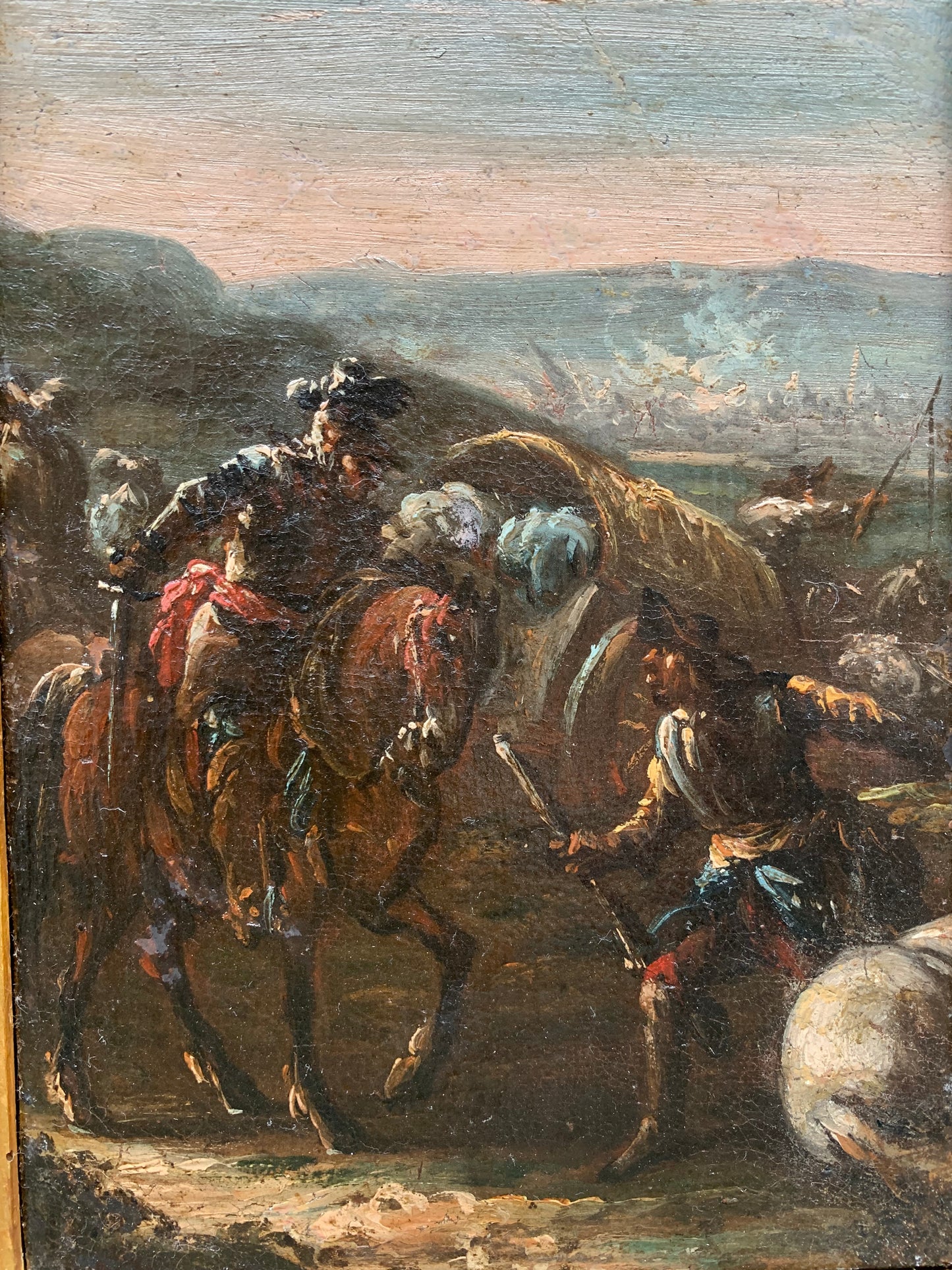
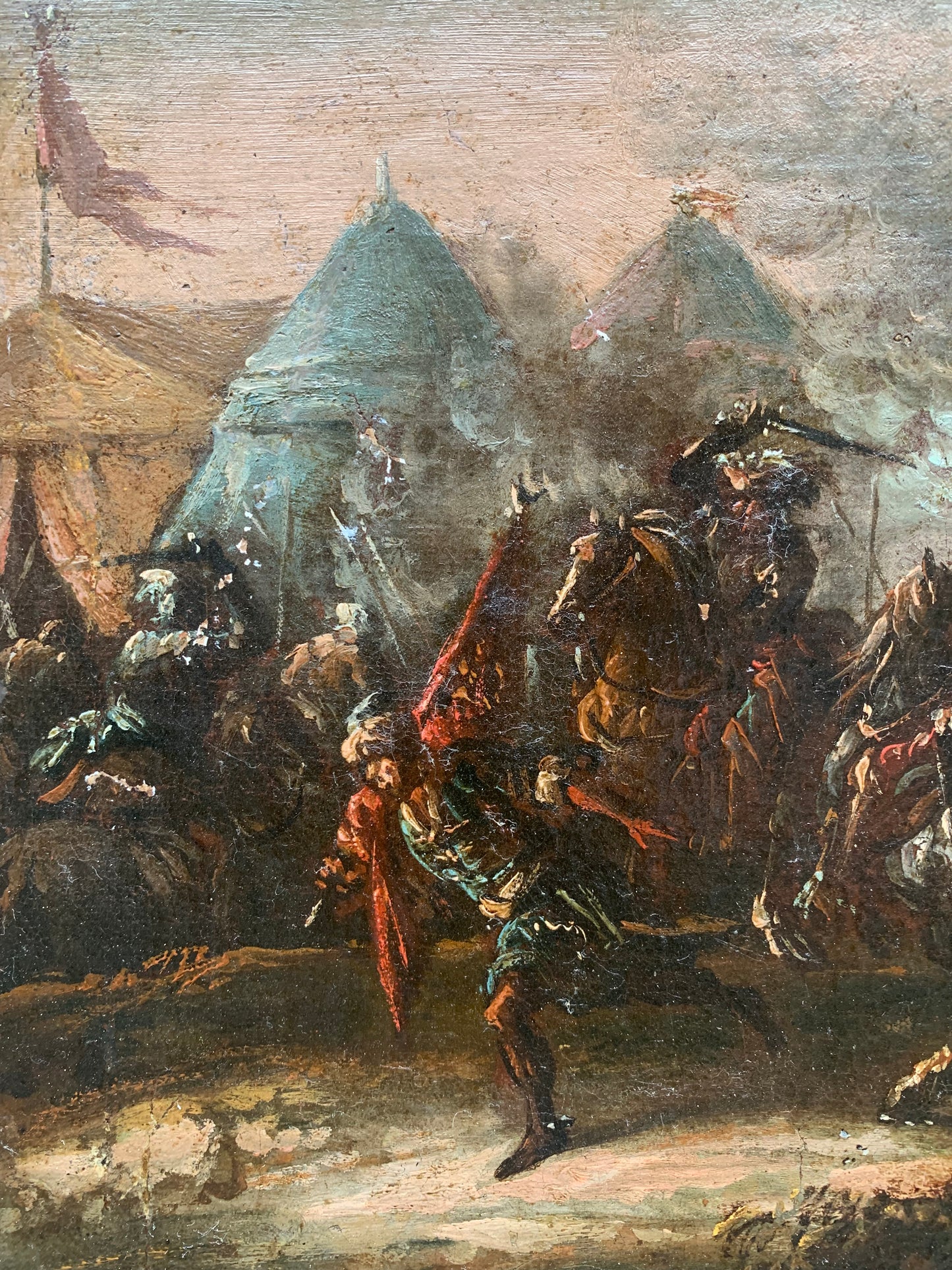
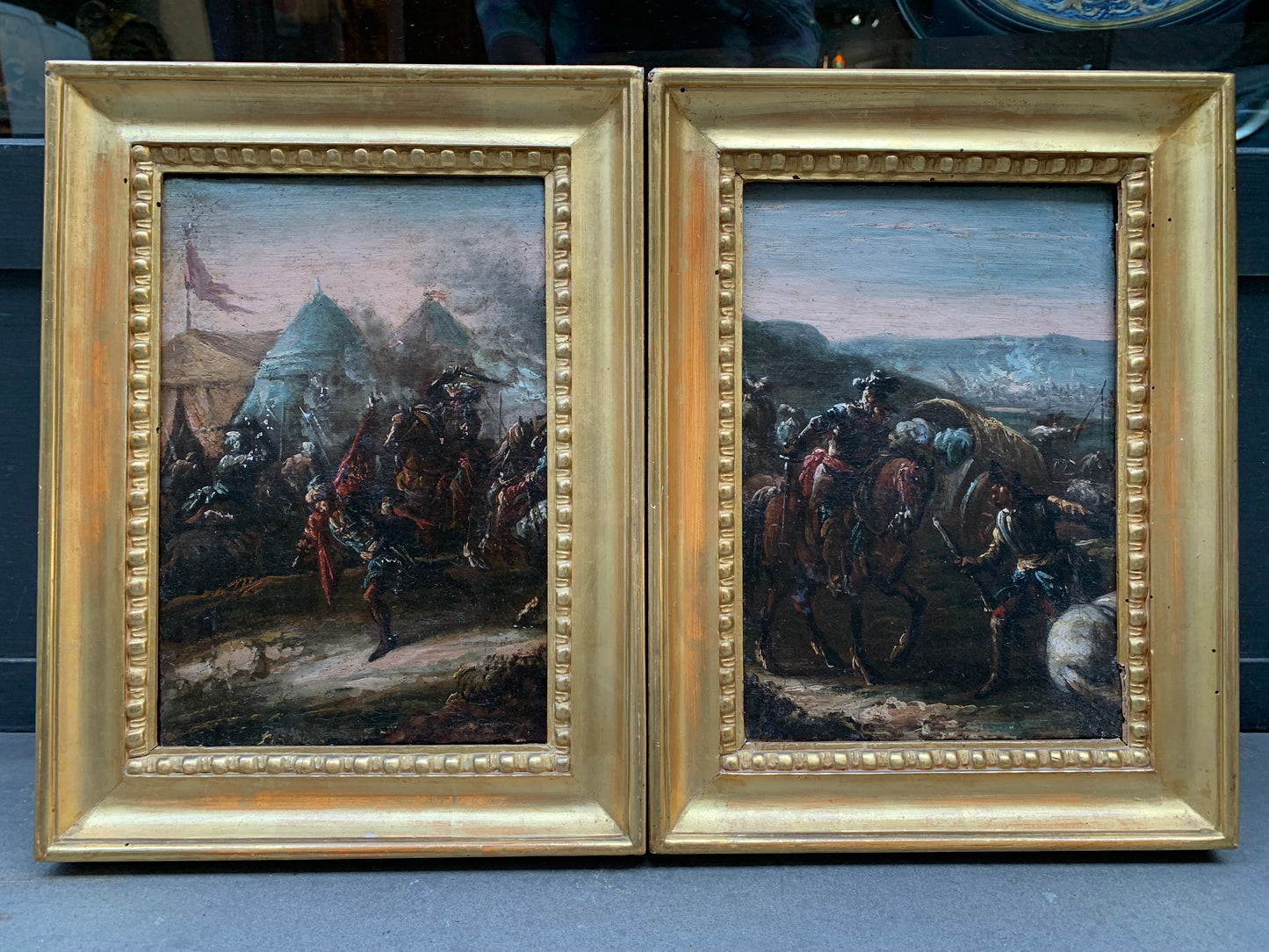
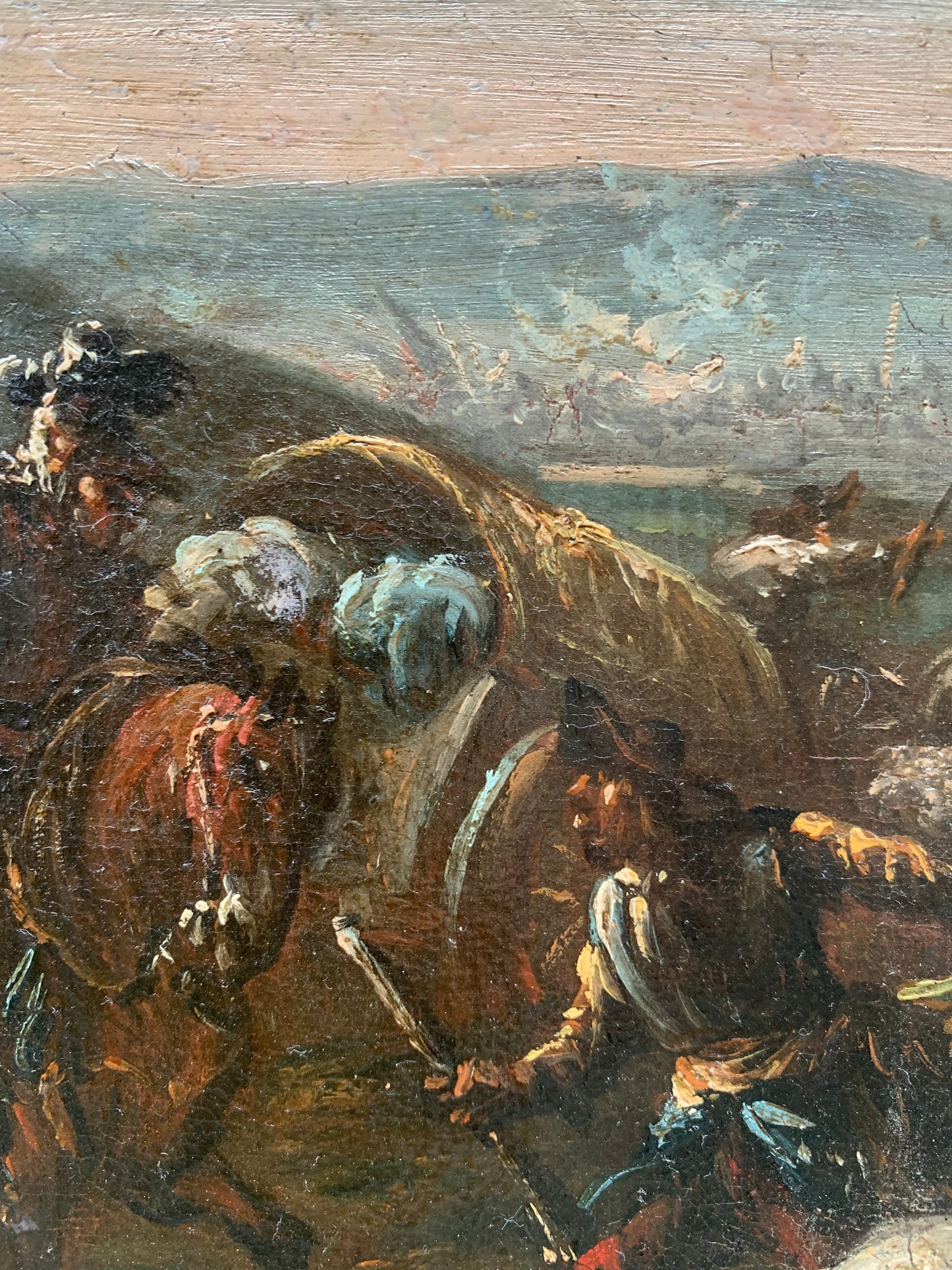
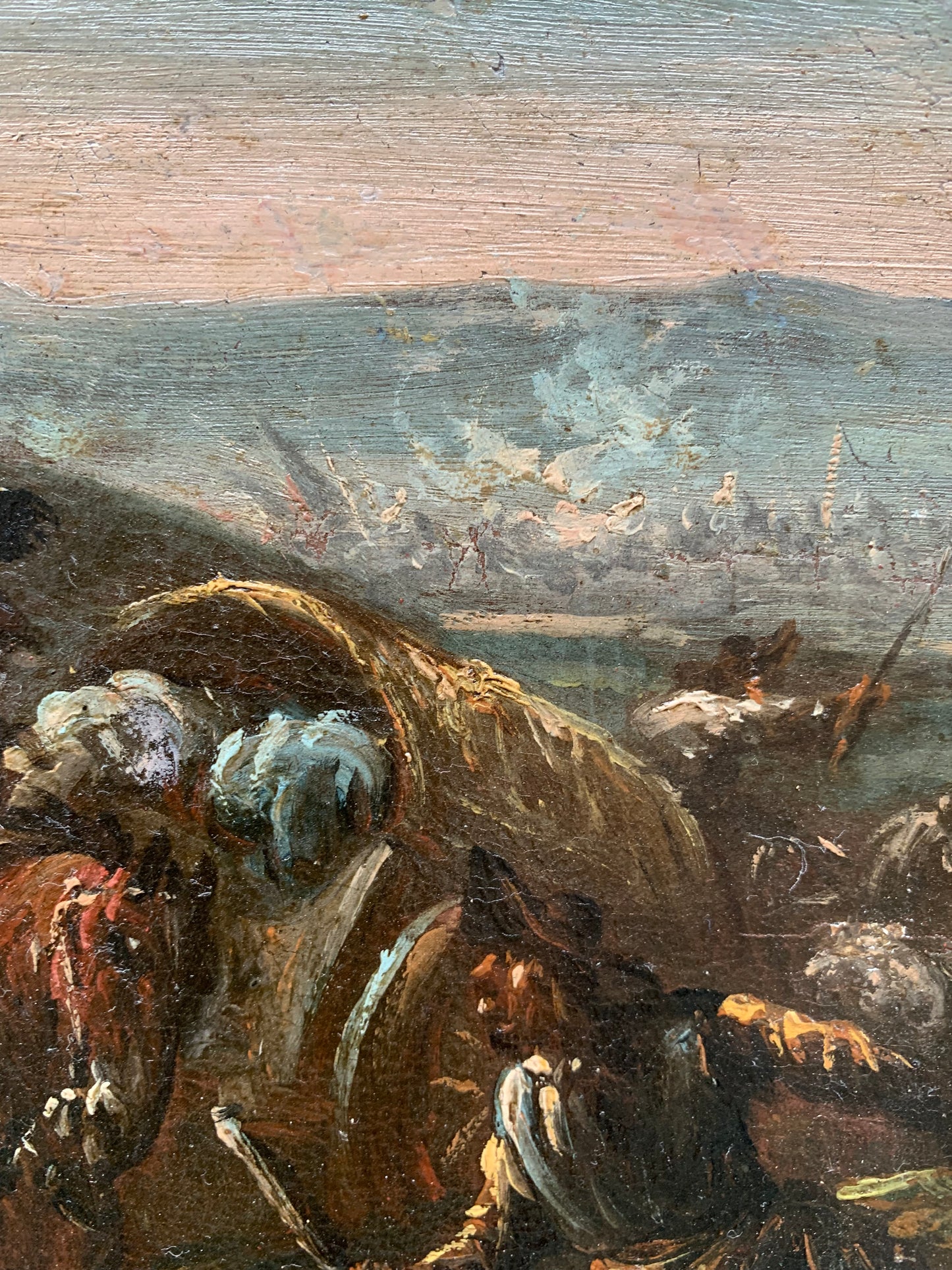
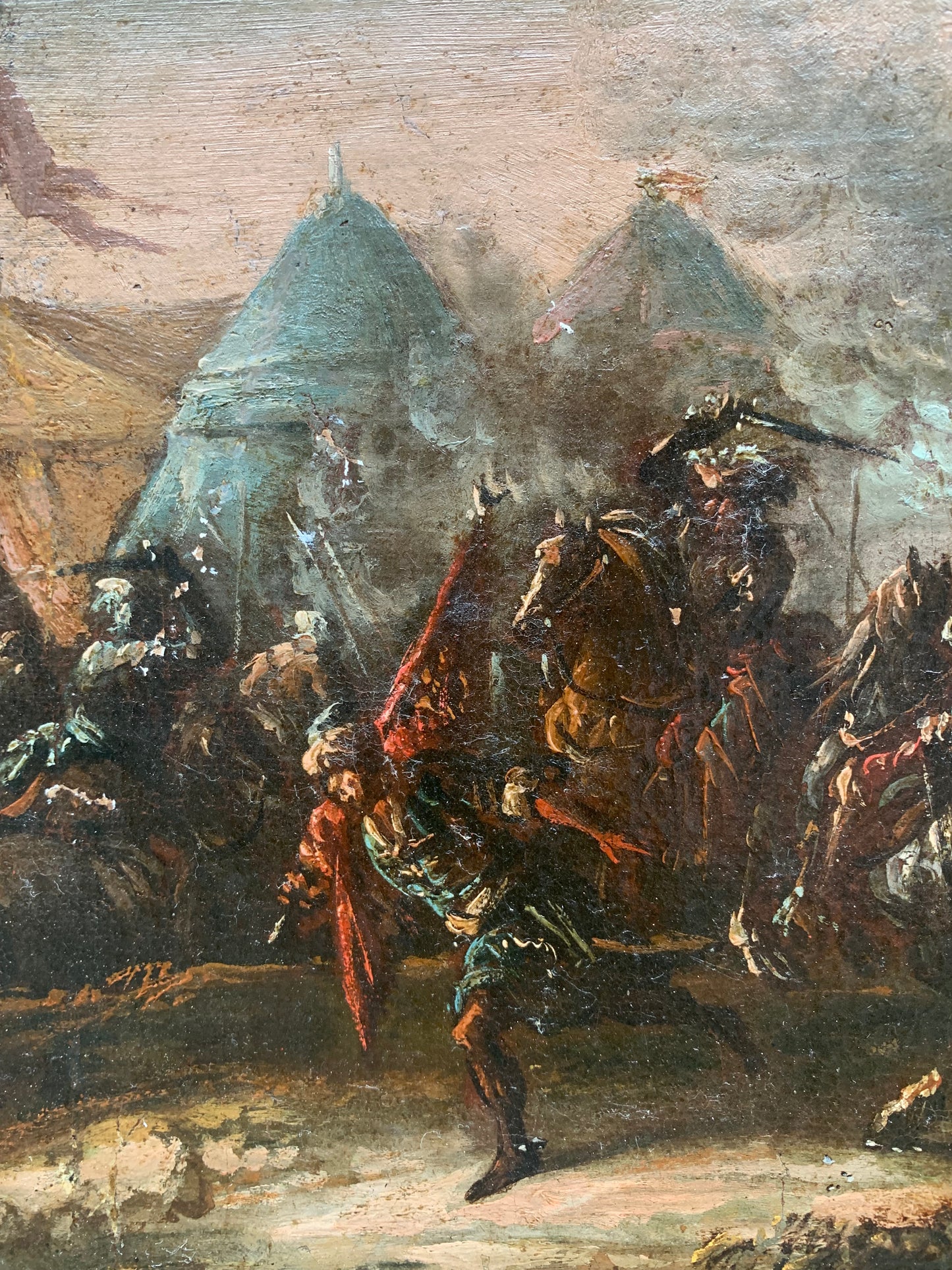
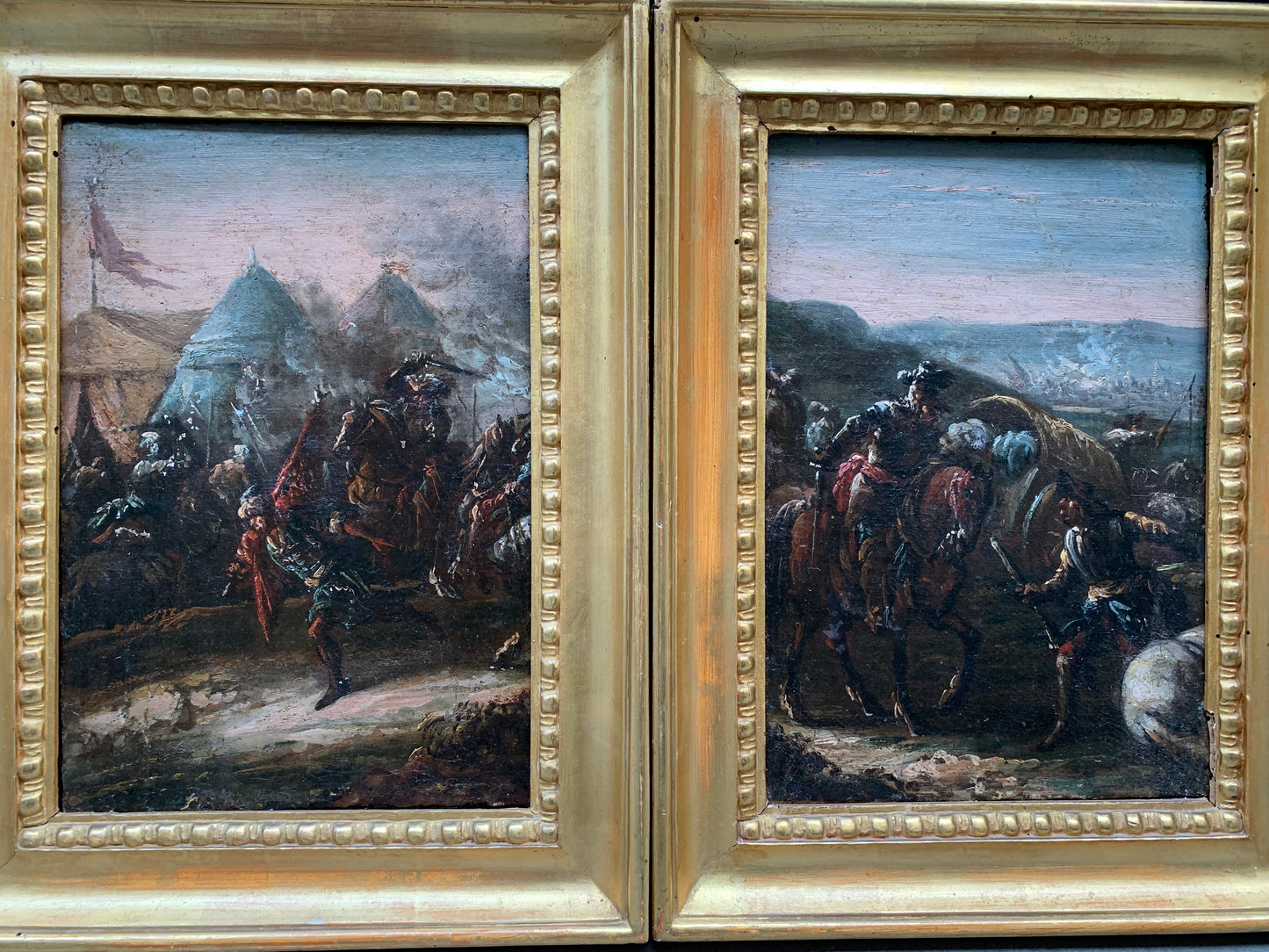
Immagine con testo
Abbina il testo a un'immagine per mettere in risalto il prodotto, la collezione o il post del blog che hai scelto. Aggiungi dettagli sulla disponibilità, sullo stile o fornisci anche una recensione.


